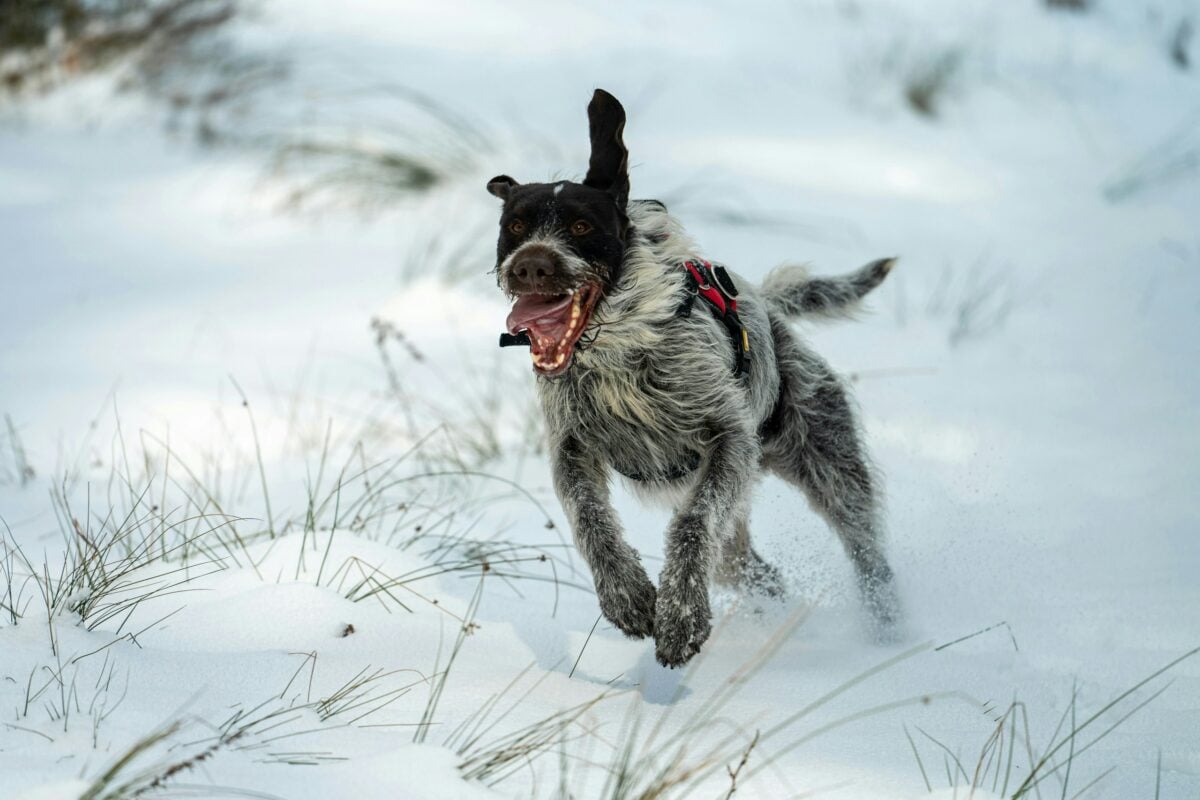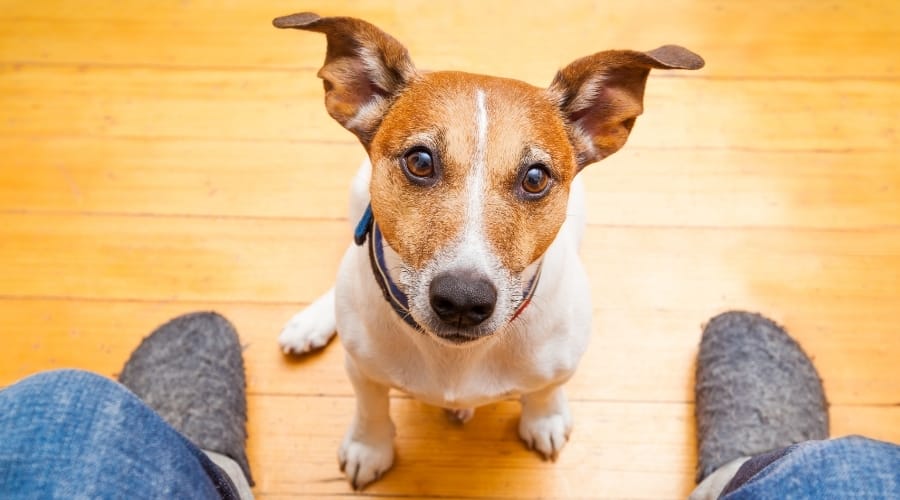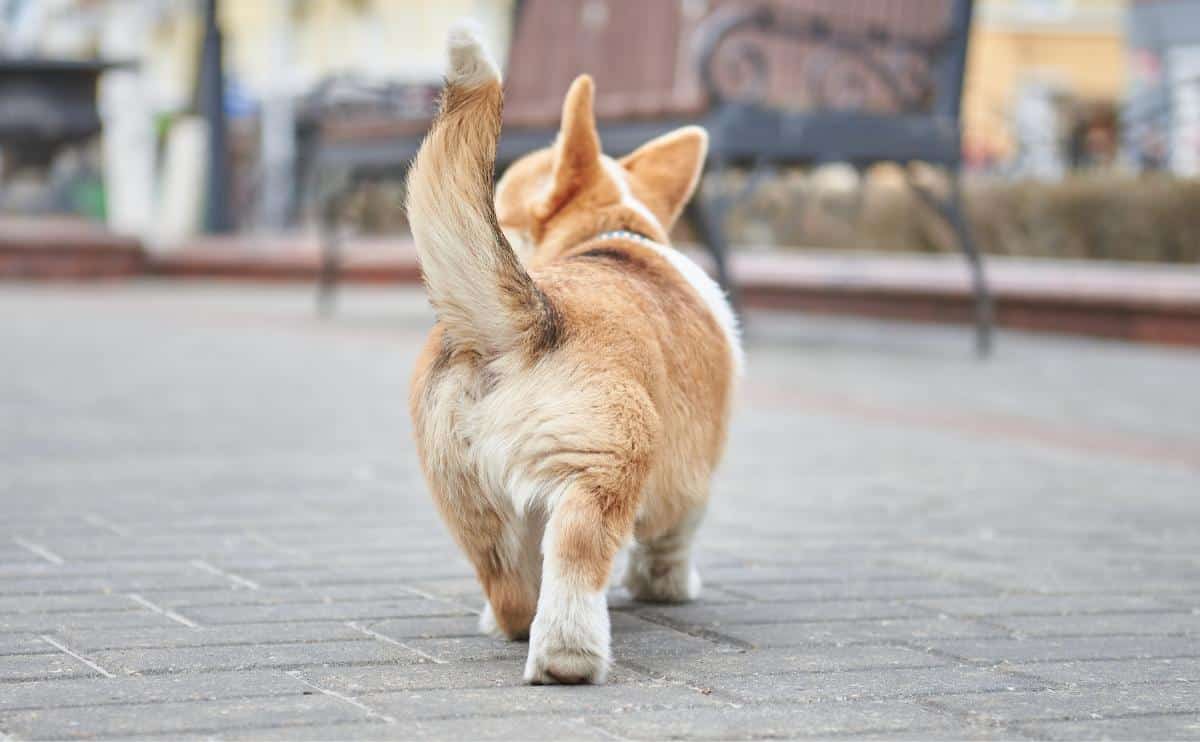The Real Reason Dogs Get Zoomies — And Why It’s Kind Of About You
When you purchase through links on our site, we may earn a commission. Here’s how it works.
Your dog bolts across the room like a fuzzy meteor, paws skidding, eyes wild, no destination in sight. That’s not chaos. It’s confidence.
Table of Contents
Dogs don’t go full-speed meltdown mode around just anyone, and there’s a fascinating reason they save their best madness for you.

When Chaos Means Comfort
Your dog isn’t malfunctioning when they sprint circles out of nowhere. They’re celebrating a moment when their body and emotions finally align.
The kicker? They only do it when they feel safe.
A nervous dog won’t break into zoomies. They’ll hold still, pace, or hide instead.
The more often your dog feels secure, the more likely you’ll see them lose it in the best possible way.
Something To Remember: Zoomies aren’t a loss of control. They’re proof that your dog feels entirely at ease in your world.
What Exactly Are Zoomies (a.k.a. FRAPs)?
When your dog suddenly rockets across the room, it’s not random chaos. It’s biology in motion.
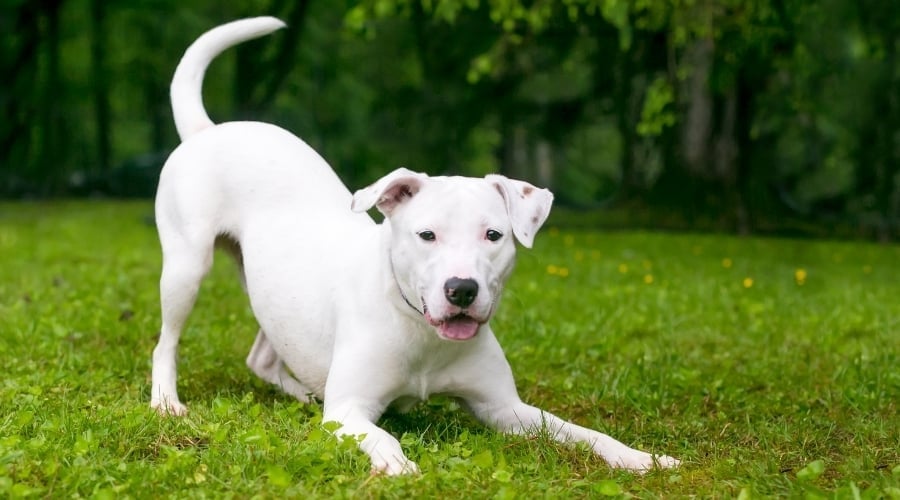
Scientists refer to these bursts of energy as a frenetic random activity period, or FRAP. It’s how dogs release pent-up tension or excitement after something stimulating, like a bath, a walk, or seeing you grab the leash.
Think of them as a full-body release valve for built-up energy and emotion. Dogs can only bottle up excitement, stress, or stillness for so long before it bursts out in one glorious sprint.
It’s the canine equivalent of a runner’s high or a human laughter fit. Sudden, contagious, and impossible to fake.
These lightning-fast laps help dogs reset their nervous systems after a spike in arousal. That’s why zoomies often follow baths, naps, or moments of sheer joy like seeing you walk in the door.
It’s not misbehavior. It’s a sign their internal stress cycle has just completed.
Science Spotlight: Experts believe zoomies are a dog’s natural way to alleviate stress and return to emotional balance, much like humans stretch, shake, or laugh after tension.
The Emotional Triggers Behind The Madness
Zoomies don’t come out of nowhere. They’re emotional explosions wrapped in fur.
When dogs experience a surge of excitement or relief, their bodies respond before their brains can catch up. That’s why you’ll often see the madness after moments of tension or anticipation, like when the bath ends, the leash comes out, or their favorite human walks through the door.

It’s their way of saying, “I survived that” or “I can’t believe this is happening.” Both translate to a sprint around the house at full speed.
In many ways, zoomies are how dogs express feelings that are too big to contain. Just as we might laugh uncontrollably after stress, dogs release that same emotional overflow by running wild until balance returns.
Worth Noting: The happier or more relaxed your dog feels, the more likely it is that those zoomies will appear. Consider it the canine version of pure emotional honesty.
When Zoomies Happen (And Why Timing Matters)
Zoomies don’t run on a schedule, but they do have patterns.
Most dogs get them after moments of stillness or stress, like after a nap or being cooped up too long.

Others explode into action during high excitement, like when they see you grab the leash or open the back door.
Each burst usually lasts only 30 seconds to a minute. It’s short, intense, and almost always followed by a big exhale or sudden flop to the floor.
The timing isn’t random. It’s their way of burning off emotional buildup before it turns into tension. Once the release occurs, calm returns, and balance is restored.
Something To Notice: The more consistent your dog’s routine, the more predictable their zoomies become. It’s like a built-in stress relief system with perfect timing.
Why More Zoomies Might Mean You’re An Awesome Owner
Zoomies are more than random bursts of energy. They’re signs of trust.
Dogs only unleash that level of joyful chaos when they feel entirely safe in their environment and bonded to the people around them. If your dog saves their wildest moments for you, take it as a compliment. It means you’ve created a home where they can fully let go.
Some dogs even tailor their zoomies to their favorite human. They’ll do laps around the couch after dinner, spin circles when you grab the leash, or bounce through the backyard like they just remembered how good life is.
Those moments may look ridiculous, but they’re actually a reflection of everything you’ve done right as a dog parent. You’re the reason they feel confident enough to run, play, and reset.
Takeaway for Proud Pup Parents: The next time your dog goes full rocket mode, smile. It means you’re doing an excellent job.
Real-Life Zoomies Of Joy
My dog Bonkers shows his excitement in the best possible way — through zoomies. Without fail, he’ll tear around the house after dinner and again after walkies, as if to say, “Thanks, here’s a little free parkour show for you!” It’s his signature move and never fails to make us laugh.
Chips, on the other hand, saves her zoomies for special occasions — right after a bath or when we’re in a secure area where she can run off-leash. Watching her little legs sprint in joyful chaos is pure comedy.
Both of them remind me how simple and contagious happiness can be when you’ve got dogs who live life at full speed.
– Emma Braby, Dog Mom & Writer for Canine Journal
9 Common Zoomie Triggers (And How To Handle Them)
Zoomies might look random, but they almost always have a cause. Here’s when your dog is most likely to go from calm to chaos, and what you can do to keep things fun and safe.
1. Outside Freedom Frenzy
Stepping outside flips a switch for many dogs. Wide-open space, new smells, and soft grass under their paws can ignite instant joy.
Zoomies in the yard or park are your dog’s way of celebrating freedom. Let them run it out, but make sure the area is secure so their sprint doesn’t turn into a chase scene.
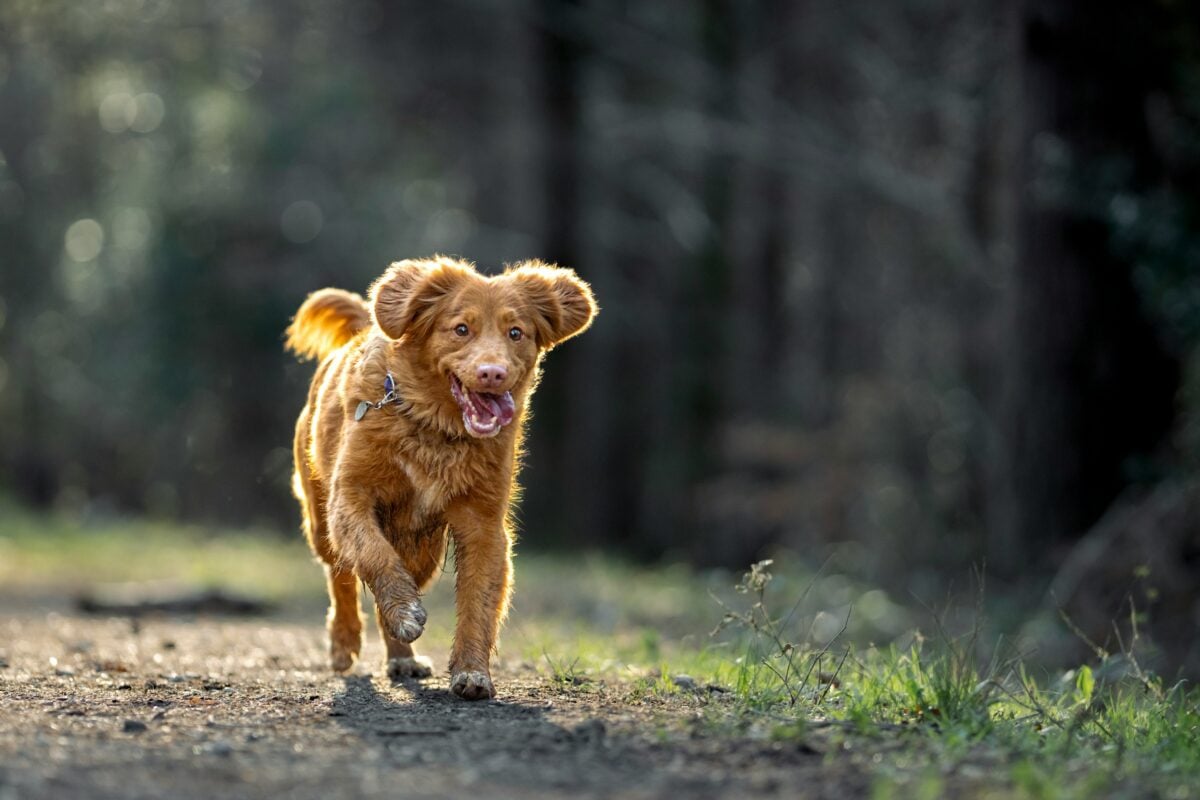
Pro Tip: Keep outdoor zoomies safe by avoiding slick decks or crowded dog parks, where collisions can occur quickly.
2. The Weather Whirlwind
Cool air, wind, or a post-storm calm can send your dog into instant zoom mode. Changing temperatures and smells create sensory overload that sparks motion.
If your dog sprints like a maniac after the rain clears, it’s not misbehavior. It’s their body processing the fresh new world around them.
Handle It: Let them zoom in a safe space first before heading on a walk, especially if the ground is slick or muddy.
3. Playtime Overload
Ever notice your dog hit top speed mid-fetch or during a game of tug-of-war? That’s play-induced chaos at its finest.
When excitement peaks, dogs switch from focused play to pure motion. If there’s more than one pup involved, it can spread like wildfire: one zoomie triggers another until everyone’s sprinting in circles.
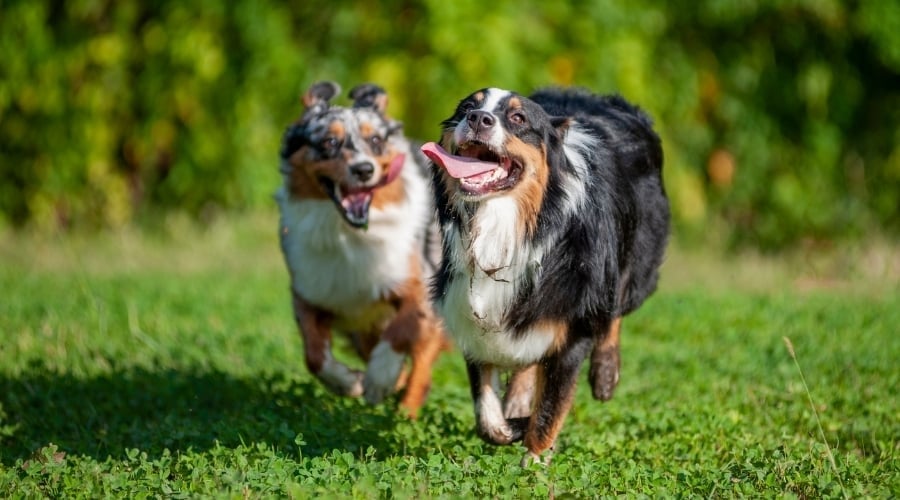
Handle It: Join in the fun, but redirect if play gets too wild or if someone’s at risk of getting trampled. Familiarize yourself with dog park etiquette to make play zoomies fun for all.
4. The Famous Post-Bath Sprint
That burst of wild running right after a bath isn’t rebellion. It’s relief.
Baths can feel stressful or overstimulating, and zoomies help your dog shake off the tension (and sometimes the towel). They’re also drying off, restoring their scent, and celebrating survival.

Tip For Bath Day: Lay down a towel trail or washable dog blanket to avoid slippery floors and flying fur.
5. The Potty Break Victory Lap
If your dog finishes their business and takes off like a track star, you’re not imagining it. Post-potty zoomies are real.
For some dogs, it’s a “mission accomplished” moment. For others, it’s an instinctive way to mark territory and spread scent after doing their duty.
Watch: By rolling in and kicking up the ground after going potty, they’re spreading their scent to mark their territory. This behavior, often accompanied by frantic running, could be a way for them to reinforce their presence in the area, ensuring their scent is distributed as widely as possible.
Handle It: Let them enjoy the moment. Just make sure the yard or leash situation keeps that celebration contained.
6. Post-Nap Or Crate Burst
After a long nap or crate break, your dog’s body is fully recharged. That first big stretch often turns into a full sprint as they release stored-up energy.
It’s a quick way to get their blood moving again and their version of shaking off the cobwebs.
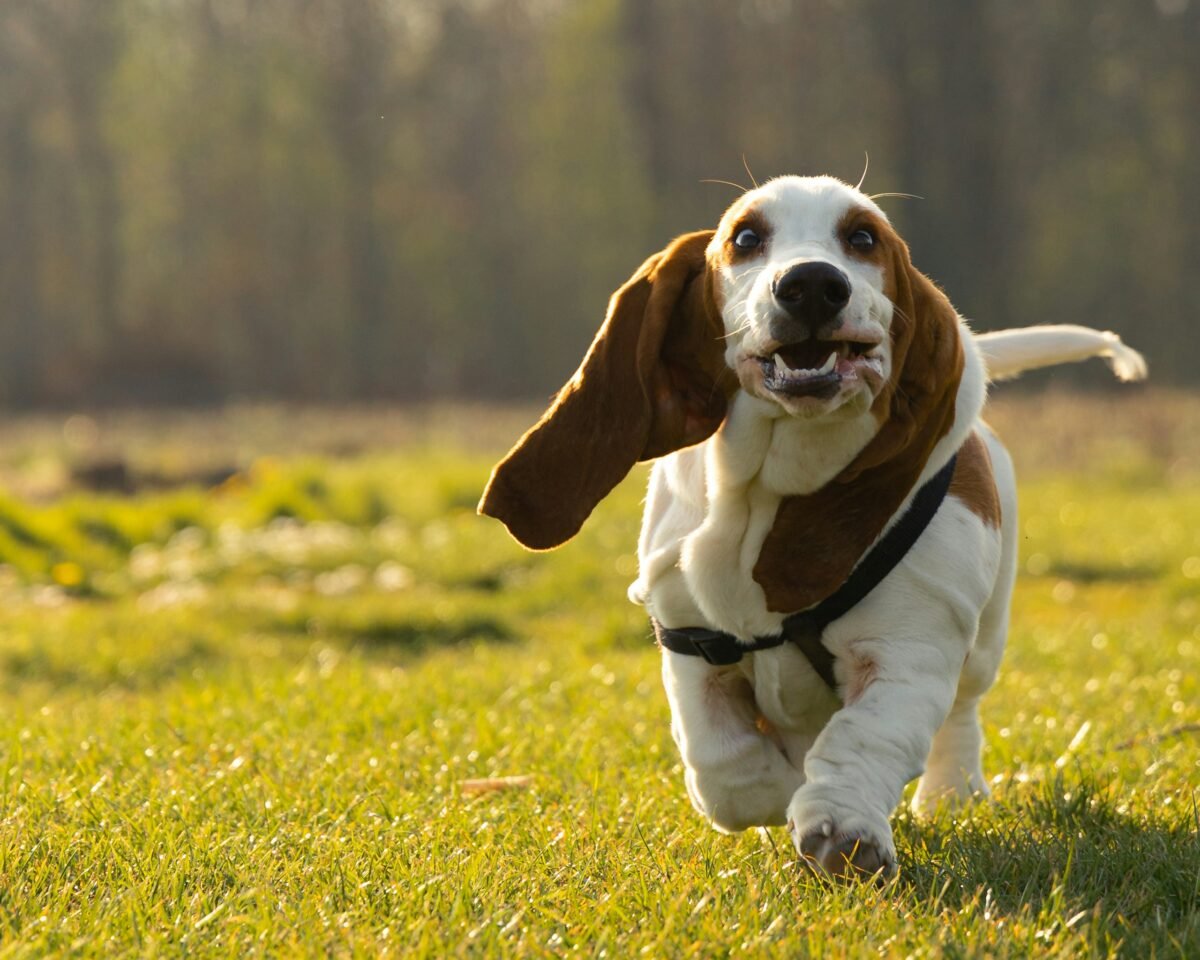
Handle It: Schedule a short walk or quick play session right after crate time to burn off that energy productively.
7. The Bedtime Zoomie Hour
Many dogs get a sudden burst of energy right before bed. It’s often a way to dump leftover excitement or tension from the day before finally winding down.
That “witching hour” sprint may look chaotic, but it’s how dogs transition from stimulation to rest.
Watch: As soon as this dog hears, “Time for bed,” she hits the late-night zoomies.
Pro Tip: Try a short evening walk or some gentle fetch to help them settle before lights out.
8. The Boredom Backfire
Frequent or intense zoomies can be a sign of pent-up energy. A dog without enough exercise or mental stimulation eventually finds their own outlet — usually at top speed across your living room.
The fix is simple. Add more enrichment through walks, puzzle toys, agility training, or new sniffing adventures to give that energy a better target.
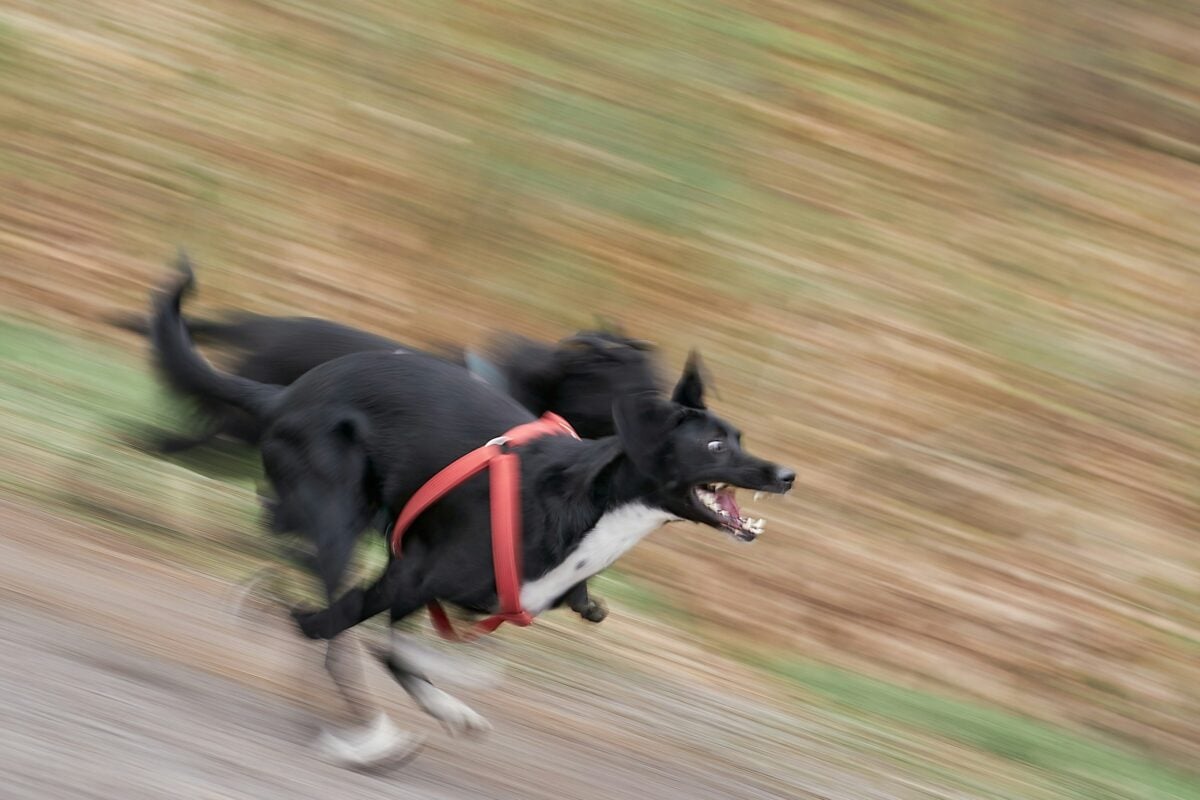
Good to Know: High-energy breeds require at least an hour of activity per day, while most others thrive with 20–30 minutes of activity. Aside from zoomies, other signs of understimulated dogs include digging up the yard, excessively barking, mouthing, jumping, or even aggression.
9. The Reunion Rush
When you walk through the door, your dog’s emotions spike all at once: excitement, relief, and pure love. Zoomies are their way of letting it all out.
Those frantic laps around the house aren’t just celebration. They’re gratitude in motion.
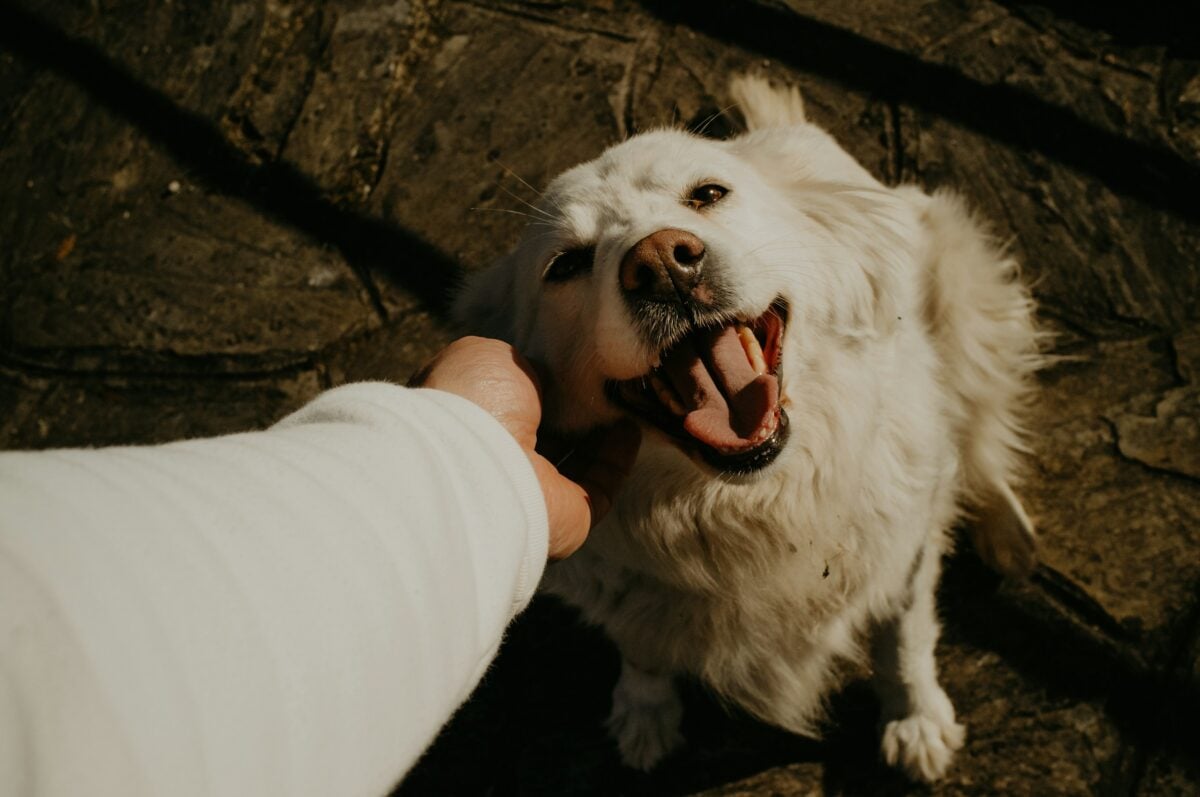
Handle It: Give them a calm greeting first, then channel that excitement into a walk or short play session once they’ve settled.
Personal Experience: Falkor’s Backyard Turbo Mode
My dog Falkor, a Poodle-Beagle mix and full-time zoomie enthusiast, treats life like it comes with a built-in turbo button. One of his favorite times to hit it? Right after our walks.
We’ll spend an hour exploring the foothills near my house or strolling to our neighborhood coffee shop to grab a latte and say hi to every passing stranger (mostly on his behalf, I’ll be honest). But the second we get home, it’s like someone swapped him out for a fur-covered wind-up toy.
This 25-pound lightning bolt blasts around the backyard in full-body joy, ears flapping, tail spinning like a propeller. Ten minutes later, he’ll pause, take care of business, then strut inside and collapse like, “My work here is done.”
It’s ridiculous and sweet, pure Falkor. Every time he bolts across the yard, I’m reminded that happiness sounds like his paws on the grass.
— Danielle DeGroot, Rescue Dog Mom & Writer For Canine Journal
Why Puppies Zoom Differently
Puppies don’t just get zoomies. They live in them.
Their nervous systems are still developing, which means energy spikes hit harder and faster. Every new sound, smell, or toy is a sensory overload waiting to happen, and their little bodies process that through motion.
Zoomies help puppies learn coordination and build muscle while releasing tension. It’s their version of testing the limits — how fast they can run, how sharp they can turn, and how loud they can bark while doing it.
The good news is, these bursts are perfectly normal. As puppies grow, their zoomies become less frequent and more predictable.
Quick Tip: Give your puppy safe open space to burn energy, but avoid slick floors or cramped rooms where sudden speed can lead to wipeouts.
Personality Types: What Your Dog’s Zoomies Reveal
Every dog’s zoomies look a little different, and those differences say a lot about who they are.
Some sprint like Olympians. Others spin like tops. All of them reveal tiny hints about your dog’s emotional world.
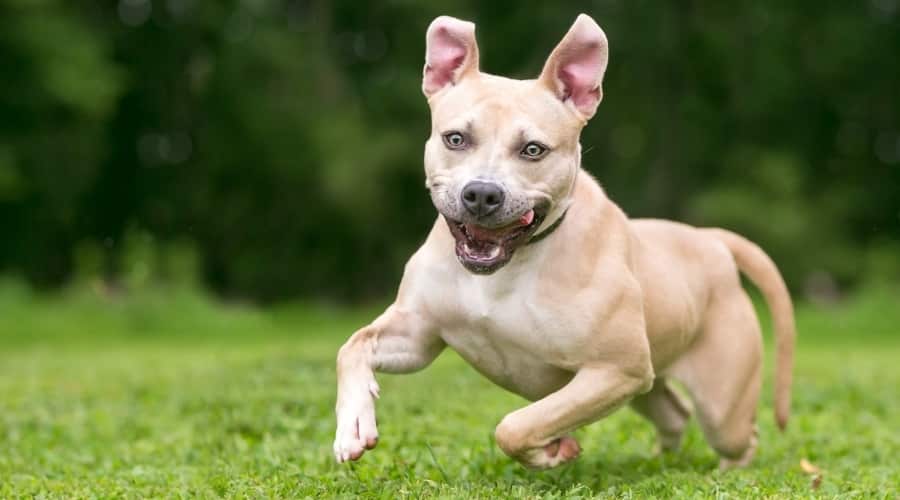
The Solo Sprinter
These dogs zoom alone and on their own terms. They don’t need an audience; they just need an open floor plan.
Solo sprinters are confident, independent thinkers who self-regulate through motion. When they’re happy, you’ll know because the furniture shakes.
The Social Spinner
This dog is the life of the party. One dog’s zoomie triggers another, and soon the whole room’s a blur of paws and tails.
Social spinners feed off energy and connection. They’re happiest when they can share their chaos with someone else, canine or human.
The Control Freak
These dogs don’t zoom randomly; they plan their routes with military precision. Same hallway, same corner, same loop every time.
Control freaks crave routine and thrive on structure. When life feels uncertain, a predictable sprint gives them back control.
Scheduled playtimes work especially well for these dogs, helping them release energy in a way that feels safe and familiar.
The Emotional Eruption
These zoomies typically occur after something significant, such as a bath, a thunderstorm, or your return home. They’re fueled by relief and emotion rather than energy.
Dogs like this are deeply sensitive. They process their feelings in motion, which makes them incredibly empathetic companions.
The Night Owl
Zoomies right before bed? Classic night owl energy. These dogs resist rest until every ounce of excitement has been burned off.
They’re playful, dramatic, and have zero chill until their body says otherwise. Once they crash, they crash hard.
Takeaway: How your dog zooms says as much about their emotional wiring as it does their energy level. Whether they’re strategic, social, or simply dramatic, those laps around your living room are a reflection of their personality and the trust they have in you.
Zoomies vs Anxiety Or Compulsion
Not every burst of energy is a happy one. Sometimes, frantic movement can resemble zoomies, but it actually signals stress or a compulsive behavior.
True zoomies have rhythm and joy to them. They come on suddenly, last under a minute, and end with a relaxed dog who flops down in contentment.
Compulsive spinning or pacing looks different. It’s repetitive, happens in specific patterns, and can last far longer than normal zoomies. These dogs often seem tense, not playful.
Watch: This dog’s repetitive spinning might look like zoomies at first glance, but notice the lack of playfulness and how the motion doesn’t stop on its own. That’s a sign of compulsive behavior, not joyful energy release.
Environmental stress, a lack of enrichment, or underlying health conditions can all contribute to the buildup of anxious energy. Over time, that stress can morph into repetitive movement that looks “funny” but isn’t.
If you suspect your dog’s zoomies have crossed into compulsion, note when they happen and what triggers them. Record a short video and share it with your vet or a certified behaviorist.
Quick Check: Happy Zoomie Or Stress Spiral?
Joyful zoomies burn energy. Anxious behaviors burn out your dog. One leaves a smile on their face, the other leaves them unsettled.
Happy Zoomie
- Loose body. Wagging tail. Big grin.
- Short burst (30–60 seconds) that ends with calm.
- Triggered by joy, play, or freedom.
Stress Spiral
- Tense body. Wide eyes. No tail wag.
- Repetitive pacing or spinning that won’t stop.
- Triggered by frustration, confinement, or overstimulation.
If you’re unsure: film it once, then redirect with a toy or walk.
When Zoomies Look A Little Different (And When To Worry)
Most zoomies are harmless chaos, but sometimes they can hint at something else going on beneath the surface.
If your dog’s zoomies look off — too frequent, too intense, or oddly timed — it’s worth paying attention. Constant bursts of energy can sometimes point to stress, pain, or a lack of physical and mental outlets.
Zoomies that involve crashing into walls, losing balance, or stumbling aren’t normal. Dogs with ear infections, neurological issues, or joint pain can misfire when they try to move fast. What appears humorous in the moment might actually be a sign of discomfort.
Another red flag is if your dog seems agitated afterward, rather than relaxed. True zoomies end in satisfaction. Worrisome ones leave your pup pacing or panting, unable to settle down.
Watch: This rescued Yorkie, a former puppy mill dog, shows anxiety-driven pacing — a repetitive, stress-based behavior that can look like zoomies but stems from fear and nervous tension rather than joy.
A vet should always check older dogs that suddenly start having extreme zoomies or new spinning patterns. The same applies to dogs that seem disoriented, vocalize in distress, or chew at their body afterward.
Watch For This: If zoomies go from occasional joy to frequent chaos, your dog might need additional support instead of more space.
Can Dogs Get Hurt From Zoomies?
Yes, zoomies can sometimes lead to bumps, slips, or sprains, especially on slick floors or in tight spaces.
Dogs don’t always have complete control of their bodies during a zoomie. That wild energy can send them skidding into furniture, sliding across tile, or tumbling off the couch mid-spin.
Watch: This pup is giving 110% to control her zoomies on a slick floor — proof that enthusiasm doesn’t always come with traction control.
Puppies and senior dogs are at the highest risk, as their coordination is not yet perfect. You can keep them safe by clearing a path and giving them space to go wild.
Rugs help with traction, and moving sharp-cornered furniture a few inches back can make a big difference. Small changes go a long way toward keeping your pup injury-free.
Outdoor zoomies are usually safer as long as the area is secure. Watch for holes, icy spots, or uneven ground that could trip your dog mid-sprint.
You don’t need to stop zoomies altogether. They’re healthy and natural, as long as your environment works with them instead of against them.
Safe Zoomie Checklist
- Clear paths of chairs, cords, and clutter
- Use rugs or runners for traction on slick floors
- Close doors to rooms with breakables or stairs
- Let outdoor zoomies happen in fenced, obstacle-free areas
- Keep puppies and seniors supervised during bursts
Remember: A little setup turns chaos into comedy. View our tips on how to stop dogs from slipping and sliding on floors.
How To Safely Channel That Energy
Zoomies are fun, but since zoomies often result from pent-up energy, providing your dog with regular physical and mental stimulation can help your dog stay balanced instead of boiling over with energy.
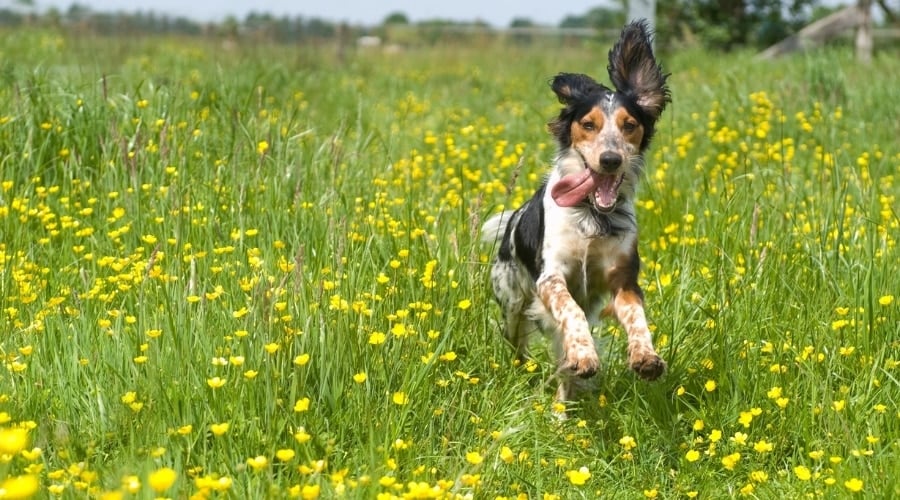
Daily Walks
Walks are your first line of defense. They keep your dog physically fit and mentally sharp through new smells, sounds, and sights.
For high-energy dogs, increase the pace or distance. A longer, faster walk often means fewer chaos laps at home. View our guide on how often to walk your dog.
Fetch & Tug-Of-War
Interactive play lets your dog unleash energy with purpose. Fetch burns off steam fast, while tug-of-war engages their body and mind.
End sessions when your dog starts to slow down. A tired dog is far less likely to surprise you with living room laps.
Mental Stimulation
Mental work tires dogs out as effectively as physical activity. Puzzle toys, sniffing games, or learning new tricks engage their brains and reduce restlessness.
Try hiding treats around the house or creating a mini scavenger hunt. When dogs use their noses and brains, they feel accomplished — and calmer.
Check out these 10 quick and easy brain games for dogs.
Outdoor Adventures
Nature is the ultimate zoomie buffer. Hikes, trail walks, or swimming sessions give your dog new environments to explore and healthy ways to expend energy.
Swimming is beneficial for dogs with joint issues. It’s low-impact, refreshing, and leaves them happily worn out.
Social Play
Allowing your dog to play with friends helps them release energy through chase and wrestling games. Playdates or trips to the dog park build confidence and social skills.
Zoomies are less frequent when your dog has positive outlets for connection and movement.
Best Energy Burners By Personality Type
- The Solo Sprinter: Independent games like fetch or frisbee in a quiet yard.
- The Social Spinner: Dog park meetups or small playgroups with familiar friends.
- The Control Freak: Scheduled playtimes with structured games like agility or obedience drills.
- The Emotional Eruption: Calm, bonding activities such as sniff walks or gentle tug sessions.
- The Night Owl: Short evening play bursts before bedtime, followed by quiet cuddles.
Quick Tip: Match the activity to the vibe, not the breed. Energy management is personal.
What Science Knows (And Doesn’t Yet)
Researchers agree on one thing: Zoomies are normal. They’re a healthy release for stored energy and emotion, not a sign of disobedience or disorder.
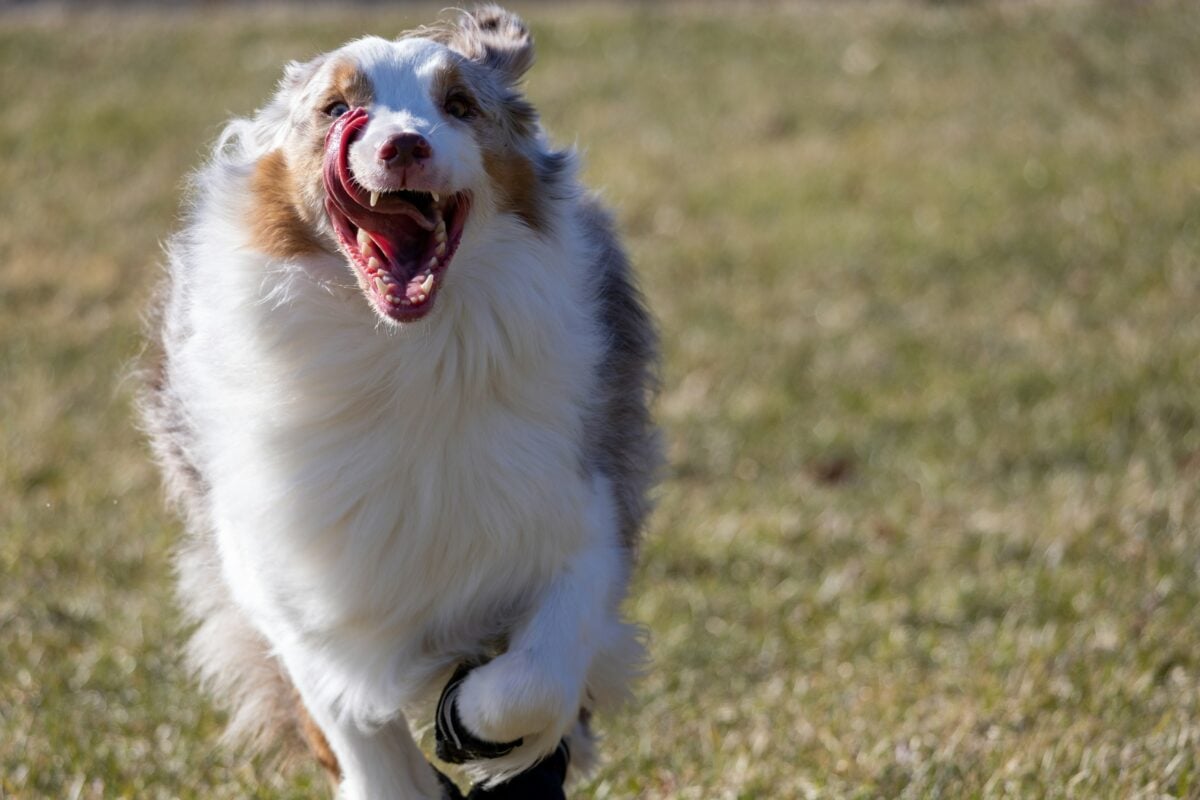
No one has yet pinpointed whether dogs learn to use zoomies intentionally as a form of self-regulation, or if it’s purely instinctive. Some behaviorists believe dogs may even choose to zoom because they know it feels good afterward.
In one study, researchers collected and analyzed over 150 instances of zoomies and found no single cause behind them. It was just dogs having spontaneous fun.
- Breed, sex, and personality didn’t appear to matter.
- Puppies zoomed more often than adults, but even senior dogs joined in when the mood struck.
- Zoomies varied in duration and intensity, often ending as abruptly as they began. Some stopped when a dog got tired or distracted, while others only ended when the dog decided they were done.
- There was no clear trigger for why zoomies start, though seeing another dog sprinting often inspired more to join.
One unexpected insight was that introverted or “loner” dogs sometimes zoomed more often than their social counterparts. Researchers believe these dogs might simply feel freer to let loose when alone.
Why We Love Watching Zoomies
Few sights make dog owners happier than a full-speed blur of fur and joy. Zoomies remind us what pure, unfiltered happiness looks like.
They’re messy, unpredictable, and completely genuine. In a world where so much feels controlled, our dogs give us permission to laugh and let go.
Watch: A compilation of dogs mid-zoomie, because there’s no better reminder that happiness can be loud, messy, and completely contagious.
Frequently Asked Questions
Zoomies are one of those joyful mysteries that make dog ownership endlessly entertaining. Here’s what science — and experience — say about the most common questions owners ask.
Don’t see your question? Respond in the comments, we’ll get back to you!
How Long Do Dog Zoomies Last?
Most zoomies last 30 to 60 seconds. Some dogs go for a few quick bursts before settling down.
Do Puppies Get More Zoomies Than Adult Dogs?
Yes. Puppies have higher energy levels and shorter attention spans, so their zoomies occur more frequently and with greater intensity.
Can Older Dogs Still Get Zoomies?
Absolutely. Senior dogs might move more slowly, but that burst of excitement still shows up when they’re happy or energized.
Are Zoomies A Sign Of Happiness?
Yes. Zoomies are a clear indicator that your dog feels comfortable, secure, and emotionally balanced enough to let loose.
Can Dogs Get Injured During Zoomies?
It can happen on slick floors or near furniture. Provide your dog with ample space and traction to help prevent slips and bumps.
Should I Try To Stop My Dog’s Zoomies?
No. Zoomies are healthy and natural. Redirect the chaos to a safe area instead of shutting it down.
Do Certain Breeds Get More Zoomies Than Others?
Yes. High-energy breeds like Border Collies, Jack Russells, and Labradors tend to zoom more than calmer breeds.
Can Stress Or Boredom Cause Zoomies?
Sometimes. Frequent zoomies can be a sign your dog needs more exercise or mental stimulation.
Why Do Dogs Get Zoomies After A Bath?
Baths can feel strange or overstimulating. Zoomies help your dog release that tension and dry off faster.
What Should I Do If Zoomies Turn Into Compulsive Spinning?
Record a short video and show your vet or a certified behaviorist. Repetitive spinning that lasts too long may indicate stress or a medical issue.
Other Dog Activities To Enjoy
If you can’t beat them, join them! But if crashing around your home isn’t your thing, there are many other high-energy activities you can partake in to help them release their energy.
Purchasing a flirt pole to use in the yard is a great activity for dogs who love to chase things, and you don’t have to exert too much energy.
Alternatively, you can try barn hunting, which is a great activity for dogs who love to sniff things out. We also have a guide on how to get started in dog sports, such as agility or flyball.
